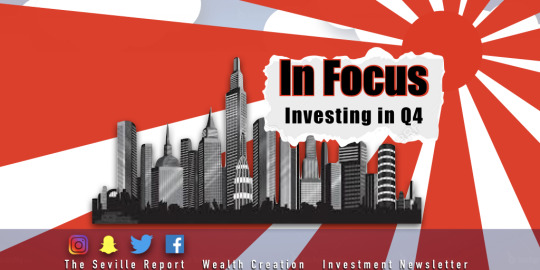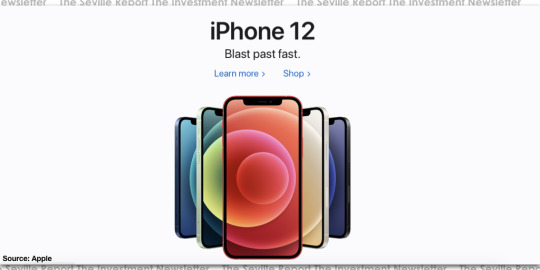#new prediction is 500 but we'll see if that's accurate
Explore tagged Tumblr posts
Text
Kaidou manga panels I like: (pt 248)
Human Puzzle Pieces: feat. Saiki, Teruhashi, and Nendou

From: vol 13 ch 139
#saiki k#tdlosk#shun kaidou#kaidou shun#kusuo saiki#saiki kusuo#kokomi teruhashi#teruhashi kokomi#riki nendou#nendou riki#so based on where we are in volumes and posts my previous prediction of us stopping just shy of 400 posts might've been a tad off#new prediction is 500 but we'll see if that's accurate#good news is we will in fact most likely have a 420th post (I'm still very mature)#bad news is we probably won't have a 666th post D:#this is very sad news and it wounds me deeply
13 notes
·
View notes
Text
In Focus: Investing in Q4

Q4 2020
Typically investors and analysts have a lot to look forward to in the fourth quarter of the year. Halloween, Thanksgiving, Black Friday, and Christmas all force consumers to buy and buy a lot. The figures reported back from retailers during a typical fourth quarter plays a big part in determining the financial health of the U.S. consumer, which sets off a bullish or bearish analysis for the following year.

But What Can Investors Expect in Q4 2020?
It's a difficult call in Q4 2020, more difficult than it's been in recent years. The stock markets recovery off of the March 2020 lows following the nationwide shelter in place orders has some investors believing the economy is back. Other investors point to the tough economic conditions outside of Wall Street that could cause this massive stock market rally to collapse or at least fall in line with what's happening with the rest of the economy.
If we look to the past for answers, we'll find that the S&P 500 has put in modest gains during the past five Q4s with one major drop. In 2019 the S&P capped an already impressive year with an ~8.2% gain in the fourth quarter. In 2018 the markets suffered a massive selloff and lost ~14.3% in the fourth quarter. In 2017 the S&P 500 registered a ~6% gain during the fourth quarter, Bitcoin registered a 209% gain during the same timeframe. In 2016 the S&P 500 gained ~4.0% and in 2015 the market gained ~6.4%.
The trend of the past five years points to the markets logging a few more points of gains to close out 2020, and so far the markets have moved up in October following the selloff in September.

Where the Rubber Meets the Road
Q4 has kicked off with several events that investors had been waiting on, Amazon's (AMZN) Prime Day and the announcement of Apple's (AAPL) iPhone 12 with 5G.
Prime Day, which usually occurs during the summer was pushed out due to issues related to the coronavirus pandemic. Taking place on October 13 and 14, Amazon reported that small and medium sized businesses hauled in over $3.5 billion in sales during the Prime Days, nearly a 60% increase year-over-year. This was a big win for investors and analysts who believe the economy is back and the economic recovery is strong.
Apple announced its iPhone 12 with 5G. The company accurately read the room and announced 5G models of the iPhone in a variety of price ranges. The rally in the Apple stock price that dates back to 2019 was heavily influenced by the company's anticipated 5G offering. But when the pandemic hit and job losses soared a few investors questioned will consumers make a $1,000 cell phone purchase a priority?
Bullish analysts are banking on consumers rushing to the Apple store to buy their new iPhone 12 as well as consumers continuing to ring the cash register at Amazon, actions that would justify Apple's over valued stock price and the overvalued stock market as a whole.
I've stated since the summer that things are not good, and that investors shouldn't let the rising market lull them into a feeling that the economy is back.
The market's rally off of it's 2020 lows were heavily assisted by stimulus, and the back half of the rally was based on anticipation of future stimulus. We're a few weeks away from the election and there is no new stimulus in sight.

The airlines are letting go of their employees after doing their best during the pandemic to cut expenses and save jobs, but the rubber has met the road and there isn't much they can do without more welfare from Washington.
Small businesses that can't digitize their services continue to struggle amid the stock markets recovery. According to Small Business Statistics, small business employs 47% of the private labor force in the U.S,. and data from Opportunity Insights reveals that small business revenue is down 23% from where it was in January 2020.
Opportunity Insights also points to data that indicates the recession has ended for high wage earners, those making over $60,000 per year, but for workers making less than $27,000 a year, employment is still down 18% from where it was in February.
These aren't good signs, but this isn't what Wall Street looks at. 30 minutes spent watching CNBC and what you'll find is analysts speaking about their peers, as if their peers, Wall Street execs and big tech employees are the economy. It's likely that an analyst for a big bank, secure in their job and bringing in $80,000 a year will drop $1,000 on the new iPhone, and rack up on Cyber Monday but that isn't everyone.
Oftentimes, analysts and those people that predict a robust economic recovery think all Americans work for a FAANG company or Zoom (ZM). They often forget about the young adults in the early stages of their work lives like the waiters and waitresses, the fast-food workers, and grocery store employees. COVID-19, and how we handle it or mishandle it has a huge impact on the lives of these workers and their employers. These workers can't use Zoom to get business done or log in from anywhere. The stock markets recovery from March has taken place without consideration for these lower wage workers and the small businesses that employ them.
Proceed with Caution
Billionaire investor and co-founder of Oaktree Capital Howard Marks gave a grim outlook for the economy. "...This down-cycle cannot be fully cured merely through the application of economic stimulus, rather, the root cause has to be repaired, and that means the disease has to be brought under control."
Marks' statement comes as coronavirus cases are on the rise again in the U.S. and across the globe. Some places in Europe are back to putting restrictions in place to slow the spread of the virus.
How Q4 2020 shakes out will be an interesting moment in economic history. Will consumers treat 2020 like any other year and go all out for Halloween, Thanksgiving, Black Friday, and Christmas or will we see less spending by consumers trying to financially maneuver the pandemic until we get a vaccine?
Investors should proceed with caution in Q4. The markets have been resilient, but a conservative consumer in Q4 could be what kicks off a market sell off and a re-evaluation of company valuations to the downside.

#Stocks#Investing#Money#Airlines#Apple#Amazon#Employment#Small Business#Investment Education#Financial Education#Money Education#Stock Market#Black Friday#Holiday Shopping#US Economy
2 notes
·
View notes